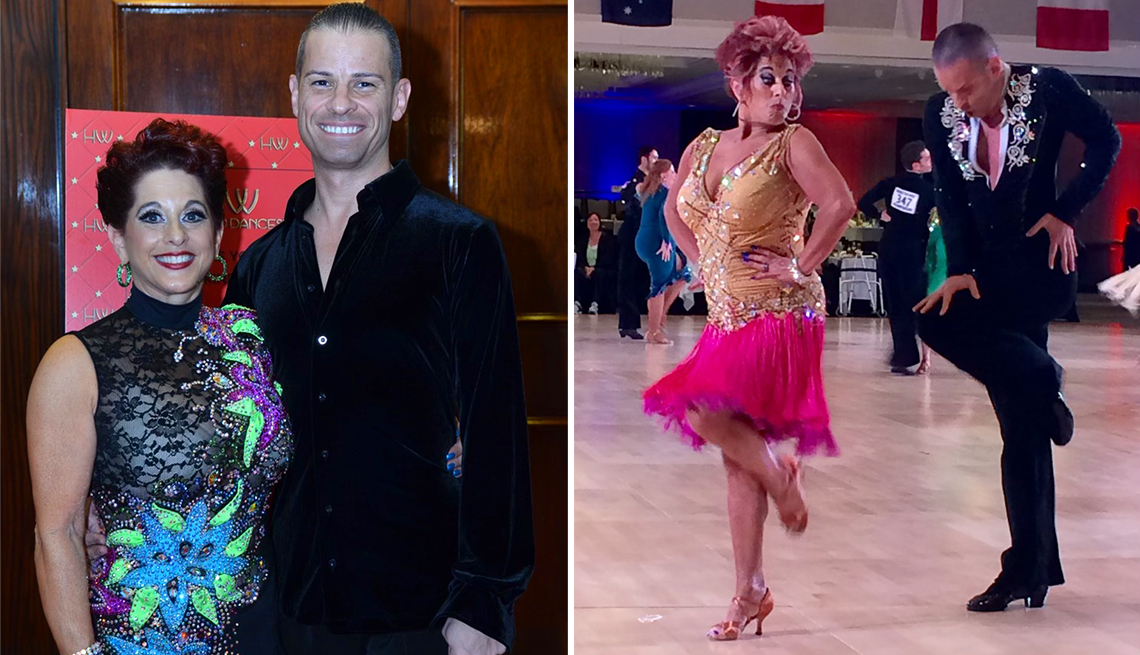Staying Fit
As a kid in Long Island, New York, Nora Fox took tap, jazz and ballet and dreamed of being a Broadway choreographer, but life led her in a different direction.
She went to college in Pennsylvania and studied business, despite her mother’s exhortations to “be a teacher and have summers off.” After graduation, she married her high school sweetheart and became a fabric buyer in New York City. When her husband finished dental school, the couple moved to Philadelphia, where Fox worked as a college admissions coordinator and in financial aid.


AARP Membership— $12 for your first year when you sign up for Automatic Renewal
Get instant access to members-only products and hundreds of discounts, a free second membership, and a subscription to AARP the Magazine.
Fox, now 73, was always an athlete. Over the years, she had participated or competed in swimming, diving, fencing, golf, skiing, archery, horseback riding, basketball and volleyball. Once she and her husband had children, Nora spent her time traveling around watching them compete in gymnastics. Both her son and daughter, now in their 40s, took their sport to elite levels.
So 17 years ago, Fox said, “Now it’s my turn.” She found her footing in the world of dance and has soared to the top in pro-am ballroom competitions, in which a professional dancer partners with an amateur. She recently competed in the New York Dance Festival and won all five of her dances.
How did you begin dancing as an adult?
Ballroom Dance Defined
There are four styles of ballroom dance.
Two in American Style:
- American Rhythm (energetic and upbeat): cha-cha, rumba swing, bolero and mambo
- American Smooth (fluid and graceful): waltz, tango, foxtrot, Viennese waltz
Two in International Style:
- International Latin (intimate and passionate): cha-cha, samba, rumba, paso doble, jive
- International Standard (smooth and slow): waltz, tango, Viennese waltz, slow foxtrot, quickstep
While both main categories include the same dances, they have different performance styles and techniques. There are also minor dances, often called “nightclub dances” in competitions, such as salsa, hustle, bachata and merengue.
My daughter was getting married in 2004. My husband wanted to do a father-daughter tango at the wedding. He prepaid for lessons at Fred Astaire Dance Studio in Hampden, Connecticut, near our home in Cheshire. He had a picture in his mind of being the suave guy dipping his daughter, who’d be dancing with a rose in her mouth. It was really funny.
The only thing I knew about ballroom dancing was as a teenager watching Lawrence Welk with my grandparents. I’d look at those ridiculous hairstyles and dresses and go, “Ugh, barf.” I never had an interest in what ballroom dancing really was. But I went to watch my husband and daughter taking lessons. One day a waltz came on, and Sergh Aliev, their instructor, grabbed me onto the dance floor to waltz, which I didn’t know how to do. Afterward, he said, “Oh you’re going to be coming back.” I said, “I don’t think so.”
At the wedding, my husband and daughter did a great tango — rose, dip and all. But after the wedding there were leftover prepaid lessons. They said, “We know you love to dance. Go take the lessons.” I said, “You’re going to create a monster.”




































































